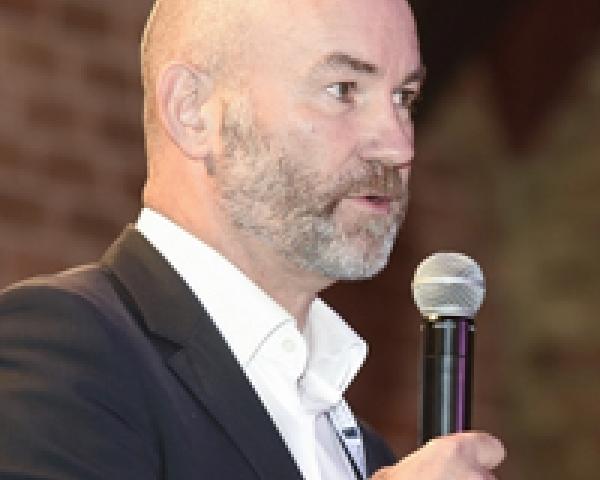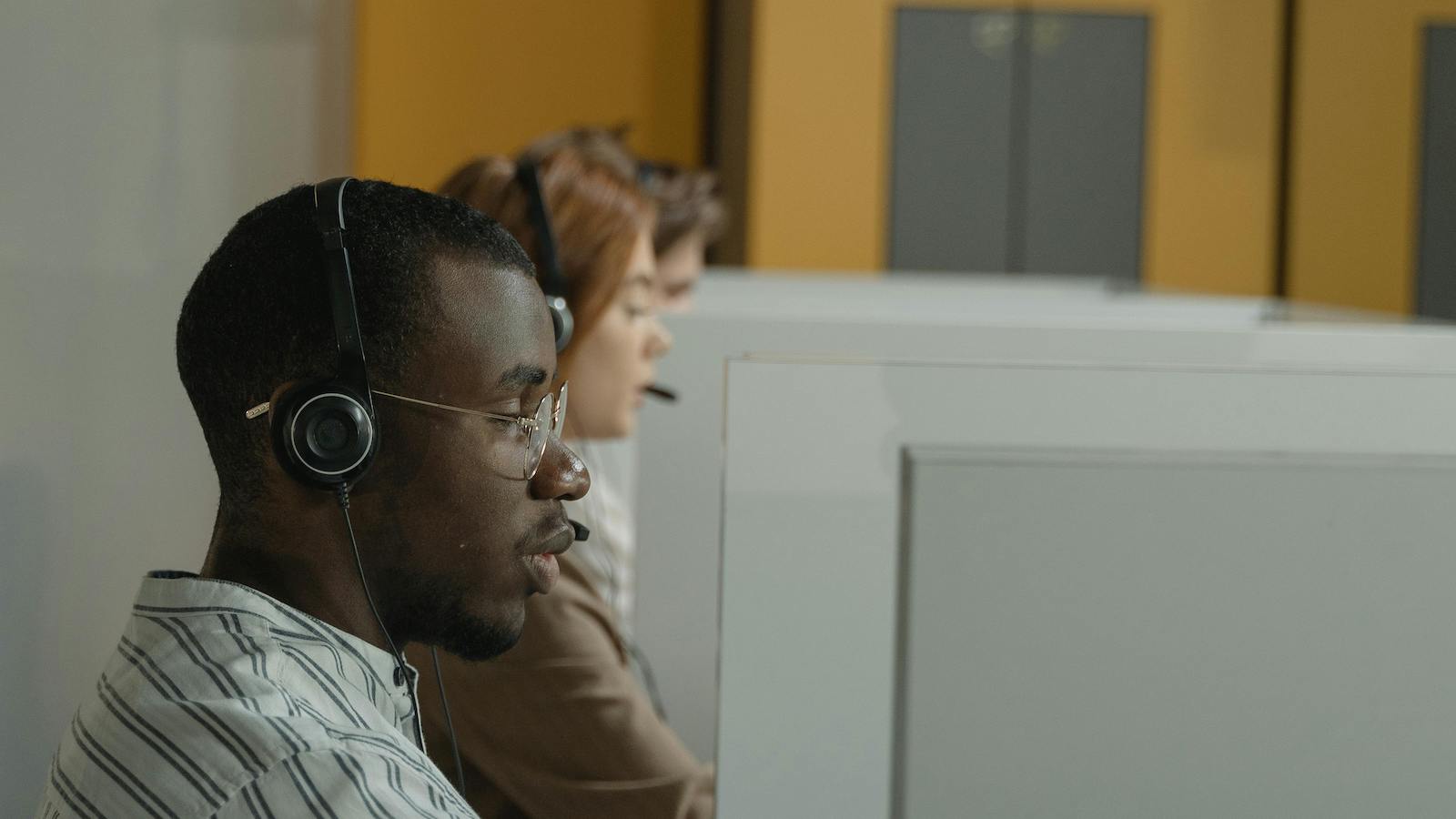 Ravid explained to me, “LiveMed is a platform that allows financial institutions to confirm customer identity remotely, collect signatures remotely and provide a video record of the customer engagement.”
The way it works is simple.
When a face-to-face discussion is required, the insurer emails a link to the customer. This can be for events such as confirming a customer’s understanding of the insurance policy conditions or witnessing the signing of all parts of the policy agreement.
The customer activates the link and is connected via a live video to an insurance agent. The agent uses the LiveMed platform to conduct a secure, face-to-face discussion with the client. The platform allows documents to be shared between the two parties, which they can both review and amend in real time, before both parties sign electronically and the document is locked down.
The whole session is recorded and kept for several years in case a customer disputes the policy conditions or that he even signed the policy in the first place. (If you are interested in an example of a policyholder disputing an electronic signature, read this article in the Insurance Journal about Bonck v White.)
Knowing whom you’re talking to
While digital facial recognition technology (and other biometric measures) are advanced and sophisticated, humans remain better at visual identification. In some jurisdictions, that remains the only option because biometrics are not yet permitted for identity verification.
“Humans understand the face holistically,” according to the study “The Limits of Facial Recognition” by Tim De Chant. And visual identification still carries great weight in the process of verifying a customer’s identity and in fraud detection. Humans are better at assessing if we are who we say we are or if our claim is suspect.
There will always be occasions when a face-to-face meeting is required to complete a transaction. LiveMed enables this human interaction without requiring the customer to go to a branch or an insurance agent to visit the customer's home.
More than a VideoTech platform
Behind the video interaction, LiveMed’s algorithms verify the authenticity of documents supplied by the customer. Ravid told me, “When a customer brings in a fake document, we have a high success rate at identifying if it is a fake. We’ve developed a solution that takes real IDs, studies different parameters against them and then compares these with the documents being presented. The institution still relies on human judgment, but LiveMed gives the agent a reliable tool to help with the decision.”
The LiveMed platform uses webRTC, an open-source platform that provides browsers and mobile applications with real-time communications (RTC) capabilities via simple APIs. It also runs as a cloud or an on-premise solution to cater to an institution’s specific requirements and policies on security, data and technology.
It is a device-independent platform that delivers both mobile and web. Ravid explained, “We’ve worked hard to make this very easy to use for the customer. Simply click on the link, go online with the agent, finalize or review the document, open the signature box and then sign with their finger. Simple!
“We take any format document or webpage, whatever, and turn them into a series of pictures. This allows changes, sketches and amendments on the screen by both parties, [in] real time. Then these pictures, or pages, are locked and put together and sent to both parties as a record. We are patenting the technology because we believe it to be unique.”
The old-fashioned ways are no longer viable
Asking a customer to come into a branch carrying paper documents just isn’t going to cut it any more. Nor is the cost of sending a representative to meet the customer. In this digital, mobile age, time is precious, and money is tight.
We are also in the consumer protection age of regulation. Financial institutions need to be able to prove beyond doubt that their conduct is acceptable and that customers fully understand the financial decisions they are making.
This requires evidence both parties can rely on should there be a dispute. (See my previous research notes on RecordSure and its use of AI for compliance monitoring.)
With LiveMed, the finance institution “sees” the person in real time without the inconvenience or cost of a physical, in-person meeting. And because the transaction is completed there and then, the insurer doesn’t have to wait for documents to be sent and processed. And both parties can be certain there are no mistakes (that it's right the first time) because everything is checked and verified on the video call.
What next for LiveMed?
Ravid is one of three co-founders who bootstrapped LiveMed and took the start-up through the UpWest Labs accelerator in Palo Alto. LiveMed has now raised its first $400,000 from seed funding on its way to raising $1.5 million in a Series A. The minimally viable product (MVP) is built and in pilot with several financial institutions, and the new funding will enable the LiveMed to launch the platform into the U.S. financial services market.
This article was first published at www.dailyfintech.com
Ravid explained to me, “LiveMed is a platform that allows financial institutions to confirm customer identity remotely, collect signatures remotely and provide a video record of the customer engagement.”
The way it works is simple.
When a face-to-face discussion is required, the insurer emails a link to the customer. This can be for events such as confirming a customer’s understanding of the insurance policy conditions or witnessing the signing of all parts of the policy agreement.
The customer activates the link and is connected via a live video to an insurance agent. The agent uses the LiveMed platform to conduct a secure, face-to-face discussion with the client. The platform allows documents to be shared between the two parties, which they can both review and amend in real time, before both parties sign electronically and the document is locked down.
The whole session is recorded and kept for several years in case a customer disputes the policy conditions or that he even signed the policy in the first place. (If you are interested in an example of a policyholder disputing an electronic signature, read this article in the Insurance Journal about Bonck v White.)
Knowing whom you’re talking to
While digital facial recognition technology (and other biometric measures) are advanced and sophisticated, humans remain better at visual identification. In some jurisdictions, that remains the only option because biometrics are not yet permitted for identity verification.
“Humans understand the face holistically,” according to the study “The Limits of Facial Recognition” by Tim De Chant. And visual identification still carries great weight in the process of verifying a customer’s identity and in fraud detection. Humans are better at assessing if we are who we say we are or if our claim is suspect.
There will always be occasions when a face-to-face meeting is required to complete a transaction. LiveMed enables this human interaction without requiring the customer to go to a branch or an insurance agent to visit the customer's home.
More than a VideoTech platform
Behind the video interaction, LiveMed’s algorithms verify the authenticity of documents supplied by the customer. Ravid told me, “When a customer brings in a fake document, we have a high success rate at identifying if it is a fake. We’ve developed a solution that takes real IDs, studies different parameters against them and then compares these with the documents being presented. The institution still relies on human judgment, but LiveMed gives the agent a reliable tool to help with the decision.”
The LiveMed platform uses webRTC, an open-source platform that provides browsers and mobile applications with real-time communications (RTC) capabilities via simple APIs. It also runs as a cloud or an on-premise solution to cater to an institution’s specific requirements and policies on security, data and technology.
It is a device-independent platform that delivers both mobile and web. Ravid explained, “We’ve worked hard to make this very easy to use for the customer. Simply click on the link, go online with the agent, finalize or review the document, open the signature box and then sign with their finger. Simple!
“We take any format document or webpage, whatever, and turn them into a series of pictures. This allows changes, sketches and amendments on the screen by both parties, [in] real time. Then these pictures, or pages, are locked and put together and sent to both parties as a record. We are patenting the technology because we believe it to be unique.”
The old-fashioned ways are no longer viable
Asking a customer to come into a branch carrying paper documents just isn’t going to cut it any more. Nor is the cost of sending a representative to meet the customer. In this digital, mobile age, time is precious, and money is tight.
We are also in the consumer protection age of regulation. Financial institutions need to be able to prove beyond doubt that their conduct is acceptable and that customers fully understand the financial decisions they are making.
This requires evidence both parties can rely on should there be a dispute. (See my previous research notes on RecordSure and its use of AI for compliance monitoring.)
With LiveMed, the finance institution “sees” the person in real time without the inconvenience or cost of a physical, in-person meeting. And because the transaction is completed there and then, the insurer doesn’t have to wait for documents to be sent and processed. And both parties can be certain there are no mistakes (that it's right the first time) because everything is checked and verified on the video call.
What next for LiveMed?
Ravid is one of three co-founders who bootstrapped LiveMed and took the start-up through the UpWest Labs accelerator in Palo Alto. LiveMed has now raised its first $400,000 from seed funding on its way to raising $1.5 million in a Series A. The minimally viable product (MVP) is built and in pilot with several financial institutions, and the new funding will enable the LiveMed to launch the platform into the U.S. financial services market.
This article was first published at www.dailyfintech.com LiveMed Brings Digital Human Touch
LiveMed uses video technology for "face-to-face" meetings that cut costs, boost convenience and eliminate errors.

 Ravid explained to me, “LiveMed is a platform that allows financial institutions to confirm customer identity remotely, collect signatures remotely and provide a video record of the customer engagement.”
The way it works is simple.
When a face-to-face discussion is required, the insurer emails a link to the customer. This can be for events such as confirming a customer’s understanding of the insurance policy conditions or witnessing the signing of all parts of the policy agreement.
The customer activates the link and is connected via a live video to an insurance agent. The agent uses the LiveMed platform to conduct a secure, face-to-face discussion with the client. The platform allows documents to be shared between the two parties, which they can both review and amend in real time, before both parties sign electronically and the document is locked down.
The whole session is recorded and kept for several years in case a customer disputes the policy conditions or that he even signed the policy in the first place. (If you are interested in an example of a policyholder disputing an electronic signature, read this article in the Insurance Journal about Bonck v White.)
Knowing whom you’re talking to
While digital facial recognition technology (and other biometric measures) are advanced and sophisticated, humans remain better at visual identification. In some jurisdictions, that remains the only option because biometrics are not yet permitted for identity verification.
“Humans understand the face holistically,” according to the study “The Limits of Facial Recognition” by Tim De Chant. And visual identification still carries great weight in the process of verifying a customer’s identity and in fraud detection. Humans are better at assessing if we are who we say we are or if our claim is suspect.
There will always be occasions when a face-to-face meeting is required to complete a transaction. LiveMed enables this human interaction without requiring the customer to go to a branch or an insurance agent to visit the customer's home.
More than a VideoTech platform
Behind the video interaction, LiveMed’s algorithms verify the authenticity of documents supplied by the customer. Ravid told me, “When a customer brings in a fake document, we have a high success rate at identifying if it is a fake. We’ve developed a solution that takes real IDs, studies different parameters against them and then compares these with the documents being presented. The institution still relies on human judgment, but LiveMed gives the agent a reliable tool to help with the decision.”
The LiveMed platform uses webRTC, an open-source platform that provides browsers and mobile applications with real-time communications (RTC) capabilities via simple APIs. It also runs as a cloud or an on-premise solution to cater to an institution’s specific requirements and policies on security, data and technology.
It is a device-independent platform that delivers both mobile and web. Ravid explained, “We’ve worked hard to make this very easy to use for the customer. Simply click on the link, go online with the agent, finalize or review the document, open the signature box and then sign with their finger. Simple!
“We take any format document or webpage, whatever, and turn them into a series of pictures. This allows changes, sketches and amendments on the screen by both parties, [in] real time. Then these pictures, or pages, are locked and put together and sent to both parties as a record. We are patenting the technology because we believe it to be unique.”
The old-fashioned ways are no longer viable
Asking a customer to come into a branch carrying paper documents just isn’t going to cut it any more. Nor is the cost of sending a representative to meet the customer. In this digital, mobile age, time is precious, and money is tight.
We are also in the consumer protection age of regulation. Financial institutions need to be able to prove beyond doubt that their conduct is acceptable and that customers fully understand the financial decisions they are making.
This requires evidence both parties can rely on should there be a dispute. (See my previous research notes on RecordSure and its use of AI for compliance monitoring.)
With LiveMed, the finance institution “sees” the person in real time without the inconvenience or cost of a physical, in-person meeting. And because the transaction is completed there and then, the insurer doesn’t have to wait for documents to be sent and processed. And both parties can be certain there are no mistakes (that it's right the first time) because everything is checked and verified on the video call.
What next for LiveMed?
Ravid is one of three co-founders who bootstrapped LiveMed and took the start-up through the UpWest Labs accelerator in Palo Alto. LiveMed has now raised its first $400,000 from seed funding on its way to raising $1.5 million in a Series A. The minimally viable product (MVP) is built and in pilot with several financial institutions, and the new funding will enable the LiveMed to launch the platform into the U.S. financial services market.
This article was first published at www.dailyfintech.com
Ravid explained to me, “LiveMed is a platform that allows financial institutions to confirm customer identity remotely, collect signatures remotely and provide a video record of the customer engagement.”
The way it works is simple.
When a face-to-face discussion is required, the insurer emails a link to the customer. This can be for events such as confirming a customer’s understanding of the insurance policy conditions or witnessing the signing of all parts of the policy agreement.
The customer activates the link and is connected via a live video to an insurance agent. The agent uses the LiveMed platform to conduct a secure, face-to-face discussion with the client. The platform allows documents to be shared between the two parties, which they can both review and amend in real time, before both parties sign electronically and the document is locked down.
The whole session is recorded and kept for several years in case a customer disputes the policy conditions or that he even signed the policy in the first place. (If you are interested in an example of a policyholder disputing an electronic signature, read this article in the Insurance Journal about Bonck v White.)
Knowing whom you’re talking to
While digital facial recognition technology (and other biometric measures) are advanced and sophisticated, humans remain better at visual identification. In some jurisdictions, that remains the only option because biometrics are not yet permitted for identity verification.
“Humans understand the face holistically,” according to the study “The Limits of Facial Recognition” by Tim De Chant. And visual identification still carries great weight in the process of verifying a customer’s identity and in fraud detection. Humans are better at assessing if we are who we say we are or if our claim is suspect.
There will always be occasions when a face-to-face meeting is required to complete a transaction. LiveMed enables this human interaction without requiring the customer to go to a branch or an insurance agent to visit the customer's home.
More than a VideoTech platform
Behind the video interaction, LiveMed’s algorithms verify the authenticity of documents supplied by the customer. Ravid told me, “When a customer brings in a fake document, we have a high success rate at identifying if it is a fake. We’ve developed a solution that takes real IDs, studies different parameters against them and then compares these with the documents being presented. The institution still relies on human judgment, but LiveMed gives the agent a reliable tool to help with the decision.”
The LiveMed platform uses webRTC, an open-source platform that provides browsers and mobile applications with real-time communications (RTC) capabilities via simple APIs. It also runs as a cloud or an on-premise solution to cater to an institution’s specific requirements and policies on security, data and technology.
It is a device-independent platform that delivers both mobile and web. Ravid explained, “We’ve worked hard to make this very easy to use for the customer. Simply click on the link, go online with the agent, finalize or review the document, open the signature box and then sign with their finger. Simple!
“We take any format document or webpage, whatever, and turn them into a series of pictures. This allows changes, sketches and amendments on the screen by both parties, [in] real time. Then these pictures, or pages, are locked and put together and sent to both parties as a record. We are patenting the technology because we believe it to be unique.”
The old-fashioned ways are no longer viable
Asking a customer to come into a branch carrying paper documents just isn’t going to cut it any more. Nor is the cost of sending a representative to meet the customer. In this digital, mobile age, time is precious, and money is tight.
We are also in the consumer protection age of regulation. Financial institutions need to be able to prove beyond doubt that their conduct is acceptable and that customers fully understand the financial decisions they are making.
This requires evidence both parties can rely on should there be a dispute. (See my previous research notes on RecordSure and its use of AI for compliance monitoring.)
With LiveMed, the finance institution “sees” the person in real time without the inconvenience or cost of a physical, in-person meeting. And because the transaction is completed there and then, the insurer doesn’t have to wait for documents to be sent and processed. And both parties can be certain there are no mistakes (that it's right the first time) because everything is checked and verified on the video call.
What next for LiveMed?
Ravid is one of three co-founders who bootstrapped LiveMed and took the start-up through the UpWest Labs accelerator in Palo Alto. LiveMed has now raised its first $400,000 from seed funding on its way to raising $1.5 million in a Series A. The minimally viable product (MVP) is built and in pilot with several financial institutions, and the new funding will enable the LiveMed to launch the platform into the U.S. financial services market.
This article was first published at www.dailyfintech.com 






